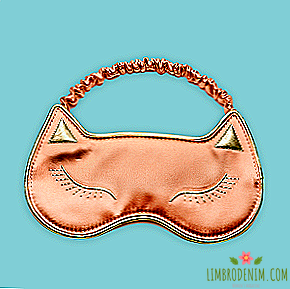How to believe in yourself?
We all have accumulated a lot of questions to ourselves and the world, with whom there seems to be no time or not to go to a psychologist. But convincing answers are not born when you talk to yourself, or to your friends, or to your parents. We started a new regular section where professional psychotherapist Olga Miloradova will answer pressing questions. By the way, if you have them, send to [email protected].

How to believe in yourself?
 One of the most common tips in pop psychology and books on self-improvement - "Just believe in yourself." Well, yes, just. For some reason nobody explains how exactly. What to do if you were taught from childhood that overconfidence is indecent, and the inner realist tells you that you should not rely too much on yourself?
One of the most common tips in pop psychology and books on self-improvement - "Just believe in yourself." Well, yes, just. For some reason nobody explains how exactly. What to do if you were taught from childhood that overconfidence is indecent, and the inner realist tells you that you should not rely too much on yourself?


Olga Miloradovapsychotherapist
First you need to try to track how long ago the belief in yourself was lost and whether it was at all. It's one thing when mom and dad make a child believe that he is an idiot, and since every child is more or less determined to fulfill the program of his parents, he really, unfortunately, grows up to be a complete failure for them. It is very difficult to fight such a story on your own, the first step towards changing the situation is its very awareness. It is quite another thing - our own programs. Let's say that each of us has our own resource, which we need to soberly evaluate in time. If you are a born "owl", you will never be successful leading the morning news. If active and active, then you are incredibly lucky, but not the fact that you will be, for example, a successful philosopher. Accordingly, here is the original problem in assessing their capabilities.
Not all potential opportunities can be assessed by the level of your IQ. Accordingly, if a person succumbed to the wrong message and went the wrong way, it is not surprising if there is a series of failures waiting for him and with each succeeding he believes in himself less. That is, practically, in order to believe in yourself, it is necessary that these successes appear, for a start, at least small but persistent, and, accordingly, the first thing to do is to change the situation if it does not suit you at all. The worst thing is that if a person is in a “wrong” situation for too long, then he is inclined to simply not consciously notice it, otherwise he will have to admit the fact that 10 years ago he could have changed the situation and stopped being a failure. That is, it is psychologically easier to maintain a situation of failure than to recognize it after a long period of time, when too much effort has already been expended.

It is psychologically easier to maintain a failure situation than to recognize it after a long period of time.

For less global episodes of losing faith in yourself, I would probably turn to behaviorists (behavioral psychologists) who follow a completely different sequence of actions: first you imitate who you want to become, and then this person gradually becomes. Despite the controversial nature of this statement, this idea also works: for example, social psychologist Amy Cuddy conducted scientific work on the so-called power poses, according to which, depending on the posture that a person takes, changes occur both on the neuroendocrine and and at the behavioral level, and if you pay serious attention to this, then these changes may turn out to be permanent and can change life in the long run.
Speaking a little bit more: if a person takes open poses and tries his best to occupy more space with his body (high-power poser), testosterone increases at a physiological level, which actually leads him to greater success, and sometimes to more risky behavior. If, on the contrary, a person takes the victim’s posture, the whole body collapses, closes, folds his arms on his chest (low-power poser), then the stress hormone cortisol is released, the testosterone level drops, and as a result he is perceived by others as a failure. Thus, in order to feel more confident, you need to start your morning with the star's posture (legs spread wide apart, arms raised and stretched to the sides).




